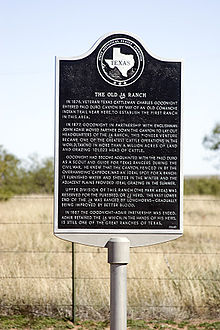
If he is fondly remembered anywhere – a moot point – it is in the USA rather than the country of his birth. John George Adair is the kind of person who did little for his fellow countrymen and for his own reputation. Born in the 1820s, the son of a gentleman farmer from Laois, he once stood as a Tenant Rights candidate in a parliamentary election in the 1850s and was described by the Young Ireland newspaper the Nation as ‘a cultured young squire’. Which is rather ironic because by the 1860s he had journeyed about as far from the Tenant Rights cause as it was possible to travel and still remain on Planet Earth. Another irony was that he once trained as a diplomat. Had he pursued a career in this area he would have been to diplomacy what Donald Trump is to self-deprecation .
One account of his life has him buying up bankrupted post- Famine estates and evicting tenants wholesale. He was certainly responsible for one of the most notorious mass evictions in Irish history.
In 1857 he had begun to acquire land (around 30,000 acres) in the Glenveagh/Derryveagh area of Donegal. Later, in 1867, he would build the magnicent Glenveagh House on the land he had purchased. Exactly what prompted him to clear the estate is disputed. It may have been the murder of his steward, James Murray, in 1861 or it may have been an incident during which he was surrounded and intimidated by tenants while he exercised the hunting rights he claimed over their land. Whatever the cause, the outcome was a bitter and vindictive campaign in the course of which 244 men, women and children from forty-seven families were thrown out of their holdings and left to shift for themselves. Such was the outcry at the time that a charitable organisation, the Donegal Relief Committee, was formed which paid for the passage of most of the evictees to Australia, where they were given plots of land to work.
Tiring somewhat of his status as a member of the Irish landed gentry, and perhaps slightly chastened by the notoriety he had acquired even among his own often rapacious class, Adair established himself in New York in the mid-1860s. He married well – to Cornelia Wadsworth Ritchie of blue-blooded Connecticut stock – and began making a fortune that would enable him to divide his time between the USA and his Donegal estate.
Adair’s fame in America is based on his business association with one of the most significant figures of the American West, Charles Goodnight.
In the 1860s Goodnight, along with his partner Oliver Loving, had brought his cattle herd from the agriculturally depressed Texas as far north as Wyoming in search of a decent market price for his steers. In doing so they created what became known as the Goodnight–Loving Trail. As a rancher Goodnight had frequent need of capital. Adair had plenty of that and in the early 1880s Adair became a business partner of Goodnight in the JA Ranch in Palo Duro Canyon in Texas. Although Adair didn’t know the horns of a steer from the more unpleasant end of his anatomy the spread – which extended for more than 5000 square kilometres – was still given the initials of the Irish money-man.
Although Adair was, by and large, a ‘sleeping’ partner, he had clearly made this particular investment as something of an indulgence, an attempt to identify himself with the romance and adventure of the West. For example he and his wife insisted on accompanying Goodnight on the inaugural trip from Colorado to Texas with the cattle that would form the basis of their herd of over 100,000 steers. In the course of the journey the Adairs reported to their host that they had spotted a party of Indians through their field glass. Upon examination, an exasperated Goodnight discovered that what they had in fact seen was a rather less threatening US cavalry troop.
Adair became the butt of some cowboy practical jokes when the party reached Palo Duro. On one occasion, when he peremptorily ordered that a mount be saddled for him by a group of cowboys who were breaking in some wild horses, the hands picked out the meanest and most untameable beast for Goodnight’s investor. As luck would have it, when Adair mounted him the horse shrugged off the habits of a lifetime and behaved like a sweet natured Shetland pony. The two men fell out and the partnership ended some time before Adair’s death in 1885. The night before his burial a dead dog was thrown into Adair’s grave in his native Co. Laois.
John George Adair began the process of clearing the tenants off his Co. Donegal estate one hundred and fifty five years ago, on this day.

CHARLES GOODNIGHT

JA RANCH, PALO DURO, TEXAS

You must be logged in to post a comment.